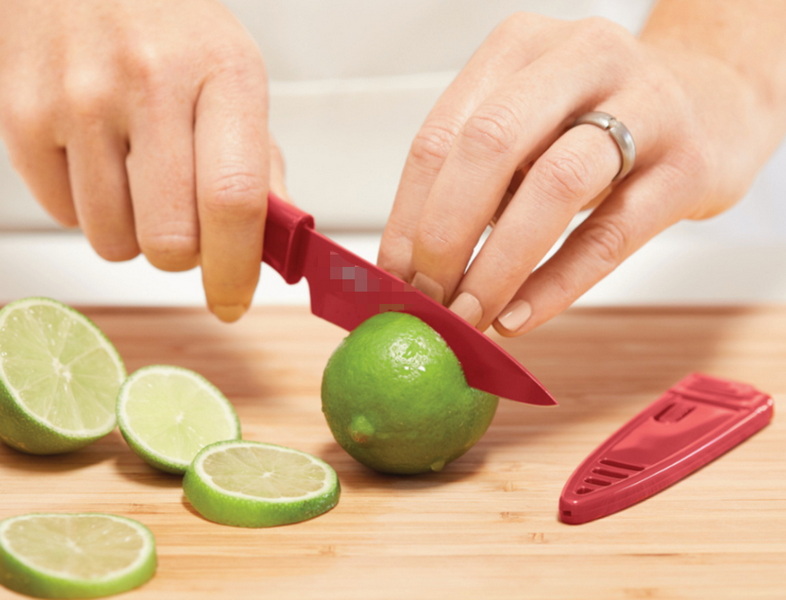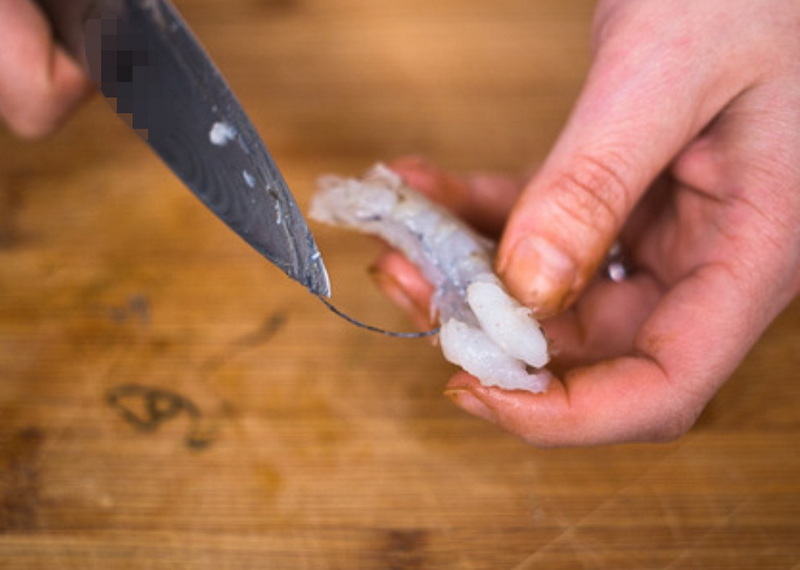- All
- Product Name
- Product Keyword
- Product Model
- Product Summary
- Product Description
- Multi Field Search
Views: 222 Author: Ann Publish Time: 2025-10-21 Origin: Site











Content Menu
● Key Features of a Paring Knife
● The Versatile Uses of a Paring Knife
>> 1. Peeling Fruits and Vegetables
>> 3. Preparing Garnishes and Decorative Cuts
>> 4. Segmenting Citrus and Sectioning
>> 5. Removing Stems and Blemishes
>> 6. Small-Scale Meat and Cookie Prep
● How to Choose a High-Quality Paring Knife
● Proper Care and Maintenance of a Paring Knife
● Advanced Tips for Using a Paring Knife
● FAQs
>> 1. Can a paring knife replace a chef's knife?
>> 2. How long should a paring knife last?
>> 3. What is the difference between a paring knife and a utility knife?
>> 4. Are there different types of paring knives?
>> 5. Is it safe to use a paring knife for cutting meat?
A paring knife is an indispensable kitchen tool renowned for its small size, sharpness, and remarkable precision. It plays a pivotal role in delicate and intricate food preparation tasks, and understanding its applications can significantly improve your cooking efficiency and quality. This article explores the many uses of a paring knife, how to select and maintain the right one, and offers useful insights for maximizing its potential.

A paring knife is characterized by its short blade, typically ranging from 2.5 to 4 inches long, with a pointy tip designed for fine detail work. Unlike larger knives that are intended for chopping or slicing bulk ingredients, the paring knife is tailored for precise, controlled motions. It's lightweight, easy to maneuver, and excels at handling small, intricate tasks that require finesse.
The blade is usually straight or slightly curved, crafted from high-quality stainless steel or high-carbon steel for durability, sharpness, and corrosion resistance. Handles vary in material and shape but are ergonomically designed to provide comfort during prolonged tasks.
- Compact Size: Facilitates detailed, controlled movements
- Sharp Blade: Ensures clean cuts and reduces food damage
- Pointed Tip: Ideal for piercing, scoring, and detailed tasks
- Ergonomic Handle: Provides comfort and control
- Blade Material: Usually stainless steel or high-carbon steel for long-term sharpness
The most common and well-known task for a paring knife is peeling. Its sharp, small blade allows for easy removal of skins from fruits like apples, pears, peaches, and plums, as well as vegetables such as potatoes, carrots, and cucumbers. The precise control means you can peel close to the flesh, minimizing waste.
By angling the blade and following the contours of produce, users can achieve smooth, uniform peels. Peeling with a paring knife offers more finesse than larger knives, especially for delicate skins.
Tip: Hold the fruit or vegetable firmly in one hand and the knife in the other, keeping the blade's edge facing toward your hand for safety and control.
Apart from peeling, a paring knife is perfect for trimming and removing imperfections from produce, such as blemishes or damaged spots. Its pointed tip helps in deveining shrimp by making a small incision along the back to extract the vein.
For small cuts of meat, such as trimming excess fat or sinew, the precise control of a paring knife allows for meticulous carving. It's also invaluable for removing seeds or pith from citrus fruits, preparing them for salads or garnishes.
A skilled chef can turn simple ingredients into artful garnishes using a paring knife. The small blade allows for carving decorative shapes from fruits and vegetables—such as roses from apples or intricate lemon twists.
Creating julienne strips, small cubes, or other decorative cuts is easy with a paring knife. These garnishes elevate the presentation and aesthetic appeal of dishes.
One of the most precise uses of a paring knife is segmenting citrus fruits like oranges, grapefruits, or mandarins. Carefully slicing just beneath the membrane, you can produce clean fruit segments without membrane or pith, ideal for salads and desserts.
Whether you're preparing strawberries, cherry tomatoes, or other small fruits, a paring knife helps in removing stems neatly. It also handles small tasks like removing blemishes or damaged parts.
For small, detailed tasks such as cutting out tiny meat pieces, kinging out minuscule sections for stuffing, or shaping cookie dough, a paring knife provides the control needed for accuracy.

Purchasing the right paring knife ensures efficiency, safety, and durability in your kitchen. Here are some essential factors:
- Blade Material: High-carbon steel provides durability and superior edge retention, but stainless steel offers corrosion resistance and low-maintenance care.
- Blade Shape: Straight blades are versatile, but a bird's beak paring knife is perfect for curved and decorative cuts.
- Handle Design: Look for ergonomic, non-slip handles that provide a secure grip during detailed work.
- Balance and Weight: A well-balanced knife reduces fatigue and increases control—test handling before buying.
- Brand Reputation: Reputable brands such as Global, Wüsthof, or Japanese brands like Miyabi and Shun produce high-quality paring knives.
To keep your paring knife sharp, safe, and long-lasting, proper maintenance is essential:
- Hand Wash Only: Avoid dishwashers. Instead, wash with warm, soapy water immediately after use.
- Dry Thoroughly: Prevent rust and corrosion by drying immediately with a soft cloth.
- Sharpen Regularly: Use a sharpening stone, ceramic rod, or professional sharpening service to maintain a keen edge.
- Storage: Use a knife sheath, magnetic strip, or knife block to protect the blade and prevent accidents.
- Control Your Cutting Angle: Keep the knife's edge at a consistent angle, typically around 20 degrees, to ensure smooth cuts.
- Use a Claw Grip: Curl your fingers inward on the hand holding the produce to avoid cuts while guiding the knife.
- Practice Chopping Techniques: Use rocking or tip-first cuts when appropriate to improve efficiency during intricate tasks.
- Experiment with Different Blades: For specialized tasks, consider paring knives with different blade shapes, such as julienne or curved blades.
- Always cut away from your body.
- Keep the blade sharp; dull knives are more dangerous because they require more force.
- Use a stable cutting surface.
- Focus while cutting, especially when peeling or intricate carving.
The paring knife is a versatile, essential kitchen tool that excels in delicate tasks such as peeling, trimming, garnishing, and detailed cutting. Its compact size and precision make it an invaluable asset for chefs and home cooks seeking to elevate their food presentation and preparation efficiency. By choosing a high-quality paring knife, maintaining it properly, and mastering its use, you can significantly enhance your overall cooking experience. Whether peeling a fruit, decorating a plate, or preparing intricate ingredients, the paring knife will remain a trusted companion in your culinary toolkit.

A paring knife is designed for precision, not heavy chopping. It complements a chef's knife rather than replaces it.
With proper care, a quality paring knife can last many years.
Paring knives have shorter blades meant for detail work; utility knives have longer blades for general-purpose tasks.
Yes, including straight, bird's beak, and peeling-style blades.
It's suitable for small meat tasks but not for heavy-duty cutting.
Word Count: Approximately 2200 words
The Ultimate Professional Knives for Halal Butchery in Middle Eastern Kitchens
Chef Knife Size Guide: Choosing Between 6″, 8″, 10″, And 12″
Custom Knife Handles: How To Design A Chef Knife That Fits Your Hand Perfectly
Chef Knife Surface Treatments Guide: From Polished Migaki To Damascus Patterns
Inside Our Professional Knife Sample Room: Quality You Can See
Universal Knife Block Buying Guide: Modern Acrylic & ABS Knife Holders for Professional Kitchens
Universal Knife Block: The Complete Guide To Modern, Hygienic Knife Storage
The Complete Guide To Red Handle Knife Sets: Style Meets Functionality in The Kitchen
Professional Knives for Halal Butchery And Middle Eastern Cuisine